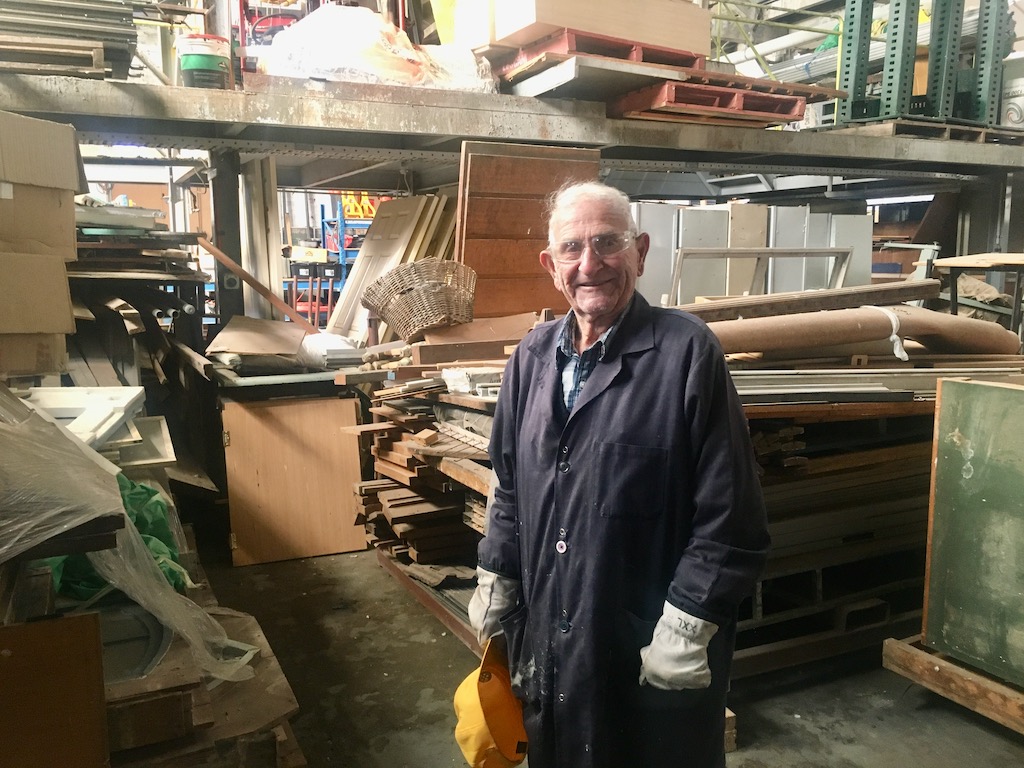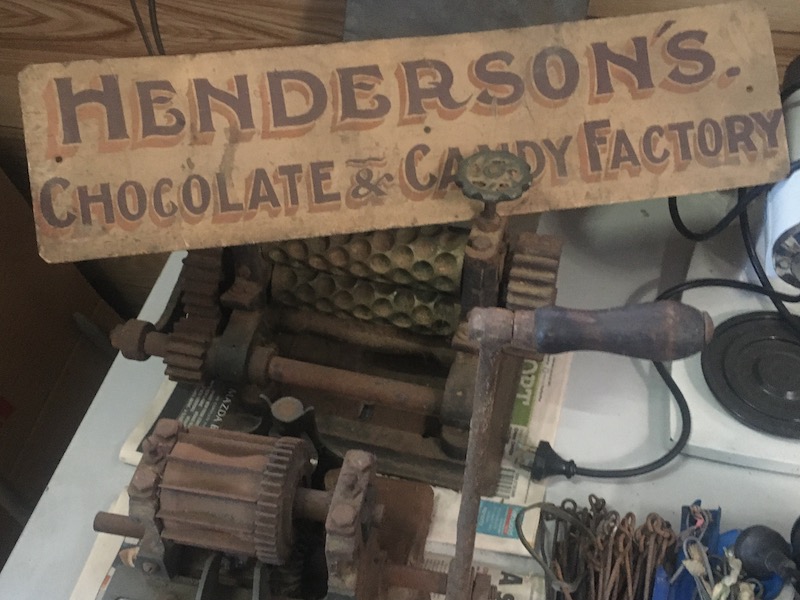
Tony Lamarra surrounded by secondhand material that’s destined for auction. Photo: John Thistleton.
Secondhand trader Tony Lamarra stows an extraordinary amount of furniture and artefacts in an old Sirdar wool factory he bought for $500,000 at a liquidation sale in 2014.
The Lamarras wanted to expand their secondhand furniture business, but the market receded and they have since sold their Verner Street shop.
An auction is planned for summer to clear the enormous shed in Ross Street, Bradfordville.
In 1923 when the wool factory was first established, the industry was as prolific as Tony’s collection.
Back then wave after wave of workers arrived, many from Bradford, England, when the West Yorkshire city was dubbed the world’s wool capital.
As truckloads of imported machinery rolled into Goulburn for spinning, weaving and dyeing wool, there were lofty plans to make this city Australia’s wool capital and manufacture enough material to clothe the nation.
New homes for the employees shot up and the suburb was named Bradfordville.
Of the 17,500 sqm site where Tony’s wool factory sits, 7700 sqm – more than three large residential blocks – is undercover. It’s just enough to accommodate the 86-year-old deal-makers penchant for buying.
That all started decades ago when Tony took auctioneer Eric Hunt’s advice and left his hamburger shop to become a secondhand trader in 1973, helped by his wife Adriana.
Tony, who was Goulburn’s mayor from 1985 to 1991, admits he is still a hoarder. Forklifts in various stages of repair stand outside and inside the massive shed, around corners and alongside excavators to help him shift tables, chairs, lounges, doors, emergency beds, statues, Christmas trees and timber.
For decades when schools amalgamated, businesses left town or changed hands and clubs folded, Tony would be called because he would buy absolutely everything and cart it away.
Much of it sits in his shed today – a wide assortment. Fifty or more desks from Marian College, plastic chairs, trays of beer glasses, packs of playing cards, and little silver teapots from the Rugby Club.
“I bought everything,” Tony says.
“Plumbing, timber, display cabinets, everything you can imagine.
“I’ve given away a lot of the show cabinets, one to the Railway Museum.”
In another part of the shed his face lights up.
“This is my little toy,” he says, pointing to an excavator. “Without machines you could not do the work – it’s better than hiring a machine.”
Outside a cherry picker on a truck, a scissor lift and three small tabletop trucks from different eras of surround the shed. Two broken-down cars sit on an old truck tabletop.
Inside, antique furniture left by jeweller Ange Zantis, who died in 2005, reminds Tony of his long-time best friend.
“I don’t believe in throwing anything away unless it is necessary,” he says.
“You see them (tilers) cutting tiles; they throw a piece out. It’s not their money they’re wasting. I say to the tiler, mate, that cost me $13 and you just threw away $7.”
Stacked halfway to an elevated ceiling, Australian red cedar from the South Coast and other cedar from Canada cheer Tony as he enters another shed section. He bought three truck loads from the then Public Works Department engineer. The timber came from public buildings in Goulburn, including the Court House.
Arched timber windows from the Marian College redevelopment sit alongside doors from the college.
“I tell you what; they are worth some money,” Tony says, clearing away bits and pieces from the windows.

This chocolate-making machine was found under a staircase in Goulburn’s main street. Photo: John Thistleton.
He was loading a sideboard from a furniture shop once and was delighted to find six 50-cent pieces under one leg to level the piece.
“I like to look in garages and under stairs, that’s where the treasure is,” Tony says.
Clearing out under the stairs of one business he discovered a chocolate-making machine that also turned out lollies and liquorice. He has a device he bought from a Marulan slaughterhouse that turns lamb carcasses into chops.
After AMP closed its Goulburn office Tony gathered up everything and has kept a hulking Chubb safe from that Auburn Street building ever since.
Adjoining one side of the mill is a house in various stages of renovation. Multiple bedrooms are furnished with double brass beds, four-poster beds in pieces and quilts. In one room sit the internal workings of a grandfather clock, which Tony says is treasure.
Liquidators sold the Bradford mills in 1929 to Amalgamated Textiles (Australia) Limited and a chequered history followed with the larger-than-life current owner making his contribution.








